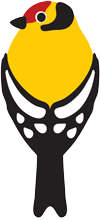For the first time in over 50 years, Menter Môn has ensured that Llaniestyn common is being grazed. Conservation Grazing is grazing to promote nature, delivering multiple benefits for wildlife and people, now and into the future.
Animals can help to manage a habitat, restore it and keep it in good condition by grazing and browsing the vegetation, removing unwanted tree regeneration and invasive species and keeping woodland open. Their hoofprints can create niche environments for plants to establish and for invertebrates.
Llaniestyn common was last grazed over 50 years ago and the Cwlwm Seiriol project, in association with PONT (a project partner) and Natural Resources Wales (NRW) has been working on a plan to re-establish grazing on the site. The aim is to restore the heathland habitat, reduce bracken and tree regeneration on the heath and promote the wide range of flowering plants that grow on the site, making opportunities for them to spread and flourish.
The system works using satellite and GPS technology. The boundary is created by drawing a fenceline on an app, on a phone or computer. The App communicates with collars worn by the cattle. They are trained using a visible electric fence in conjunction with the collars initially so that they learn to turn away from the boundary when they hear a beep from the collar.
For this year, at the request of the Community Council, PONT arranged for a temporary electric fence to be put up around one section of Llaniestyn common as a second line of defence to ensure that the cattle are kept on the heathland. The Geofence boundary has been drawn inside the electric fence and has been effective at keeping them where we want them. In the future the visible fence will not be needed so the cattle will be able to graze other areas of the common just kept in using the No-Fence system.
The farmers are very impressed by the system, they can check the cattle’s location on their phone, receive reports from the App showing where the cattle prefer to graze and how often they get a warning beep. This will be very helpful in assessing the effect of their grazing.
Hilary the PONT grazing manager is pleased with how well the trial is going. “The cattle are doing really well with the fencing and have been making a difference to the habitat, it’s nice to get good feedback from local people who are enjoying seeing them on Llaniestyn after so long.”
The site was monitored before grazing started and will be re-monitored after grazing to see what changes have occurred. Next year the grazing, with up to 5 animals, may be brought back in the early spring but more likely between July and the end of September and the effect on the nature of Llaniestyn will continue to be assessed.
We will be holding an event very soon to give local people a chance to meet the farmer and a PONT staff member to ask questions and to give their views on this pilot.

